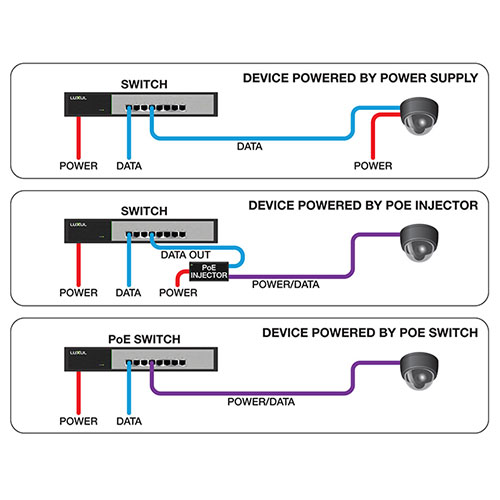Posted on 3/24/2018 by Luxul Team
By Christian Sage, technical product support rep
VLAN or Virtual Local Area Network… and you thought local area network was a mouthful. It’s a complicated subject that everyone feels they could know more about. Stick with us through this post, and hopefully by the end of it, you’ll be that much closer to being a master.
We know what VLAN stands for. What does VLAN mean?
With the latest and greatest routers, you’re able to create multiple virtual LANs within one physical LAN, utilizing the same equipment. With a VLAN, you can create walls and gates through the network to block communication between devices all connected to the same physical network.
That means you can separate traffic on your network to further increase speed, performance, and reliability.
So take a security camera. Having one on your network can cause traffic that can drastically slow down the other devices connected to your network. By placing the camera on a VLAN of its own, you can separate the camera’s traffic from the main network, thus eliminating the competition between the camera and your other devices for data. Not to mention, doing this can help increase the security on your network.
Think about your guest network. The point of having it is to keep visitors’ traffic away from the traffic on your main network. A true guest network would be completely secure and wouldn’t allow the client to log in to any network equipment. They would only be allowed access to the Internet.
Or the point of sales system at your favorite coffee shop. You go there to get a hot cup of coffee and use the free Wi-Fi—and you trust the information you passed on to the coffee shop when you paid will be protected. Placing the entire point of sales system on its own network greatly enhances the security of the information passing through it.
Other applications for VLANs:
- Home control systems
- AV equipment
- Gaming systems
- Any bandwidth intensive devices or service
So how do VLANs work?
VLANs create multiple subnets using the same networking equipment. Typically, VLAN 1 will be your management network, which is your main network. You must be part of this network to manage your devices—in other words, the only way to access your router or other network equipment is if you’re connected to VLAN 1. Each additional VLAN will have a different subnet.
For example, if your management VLAN is set to IP address 192.168.0.X, VLAN 2 (your guest network) could be set to 10.0.0.X—or any subnet, provided it’s different from the one VLAN 1 is set to.
Once these separations are made, traffic on your network will be able to travel more efficiently between node and router. And any components of your LAN you want protected will be secure behind the VLANs you have set up for them.
Great ! I understand VLANs! Now how do I set them up?
We’re glad you want to! But explaining that over text will probably lose you. Not to worry, though, our sales training manager, Jared Edwards, has you covered with this video.
As always, we appreciate your honest feedback. Drop us a comment below, and let us know your experiences with VLANs! And if you enjoyed the video above, please feel free to drop by the Luxul YouTube channel for more helpful videos.

 All News
All News

